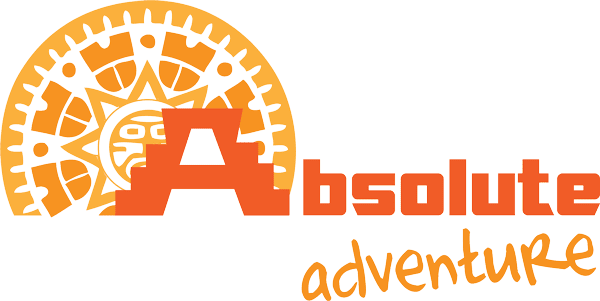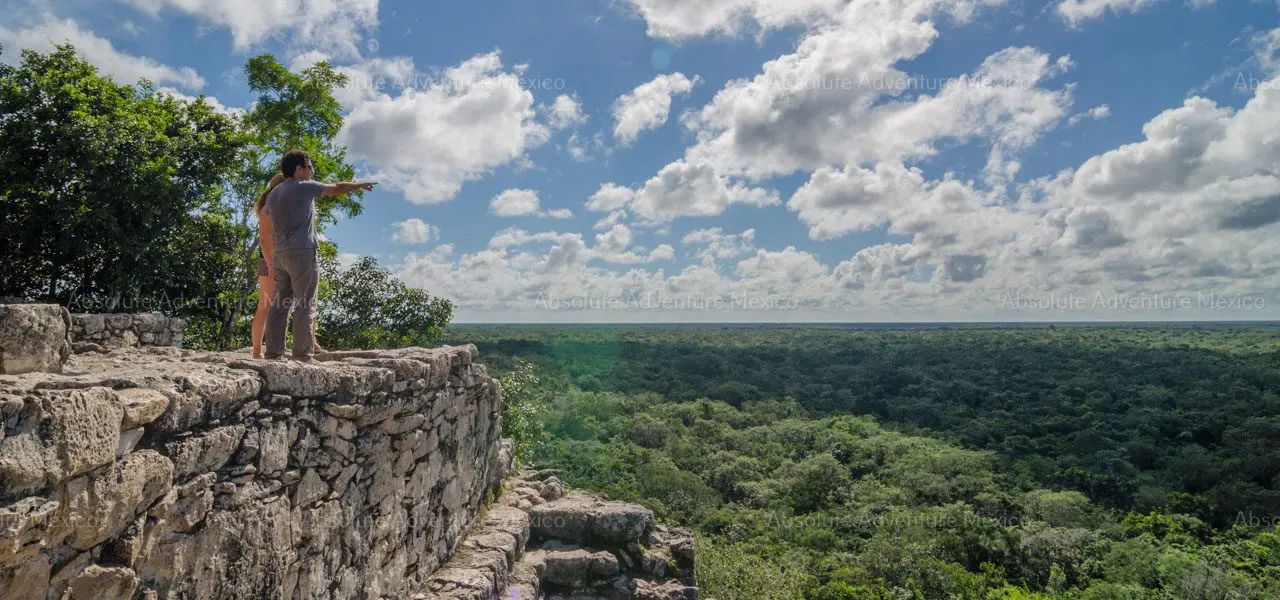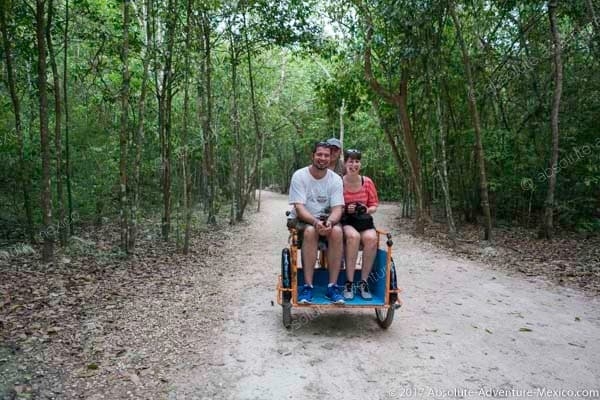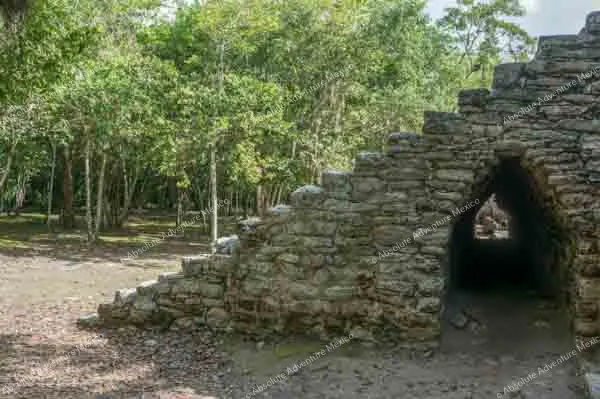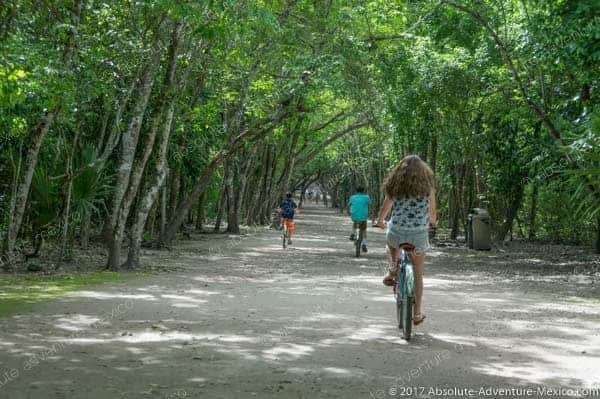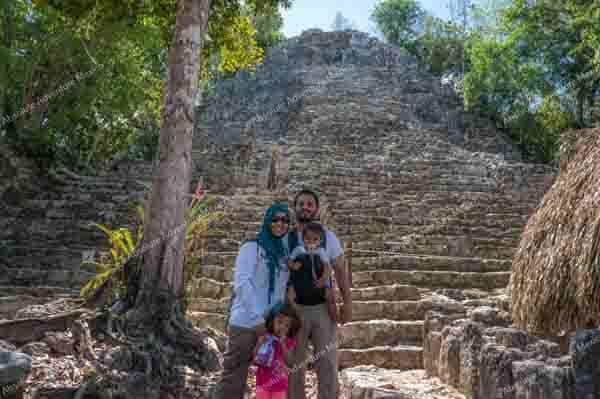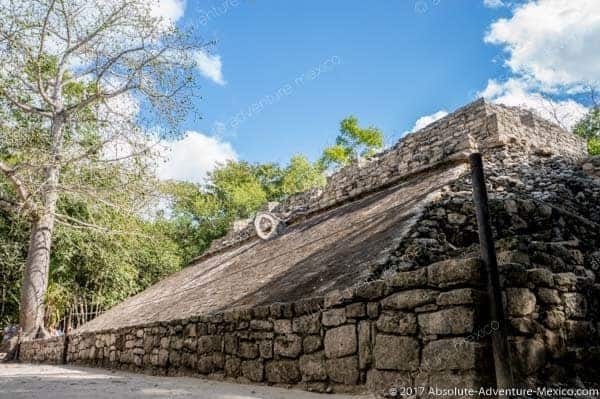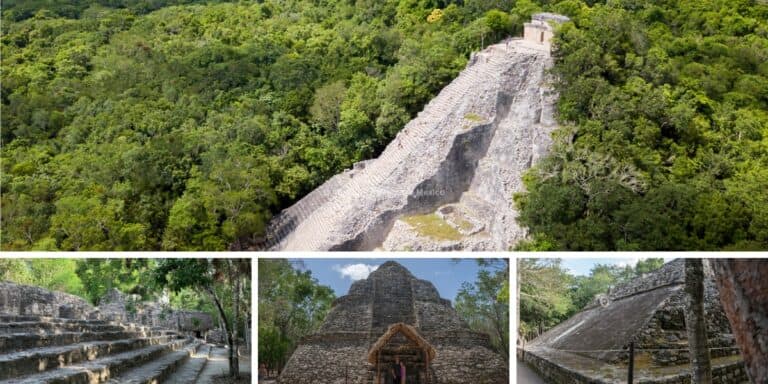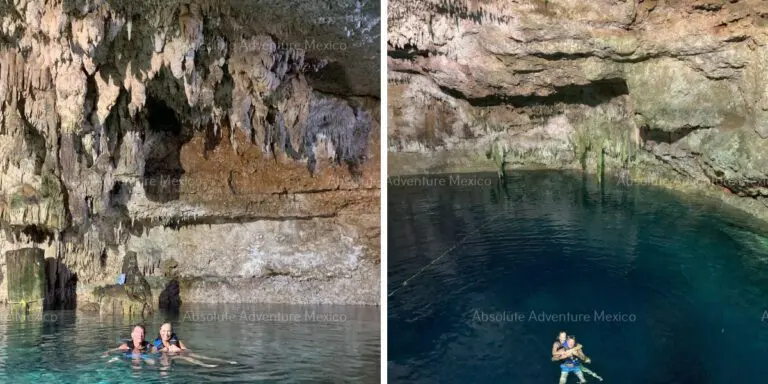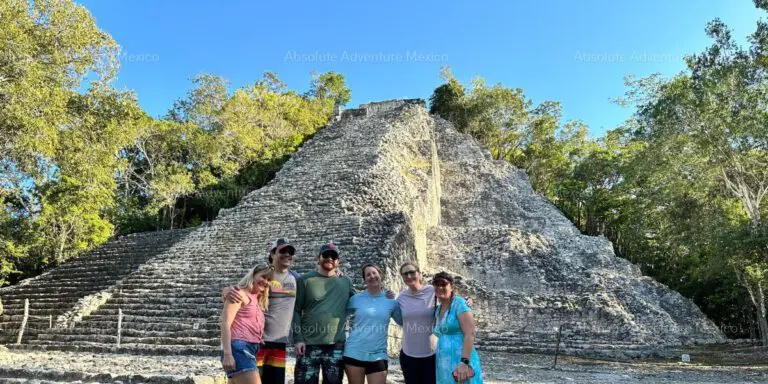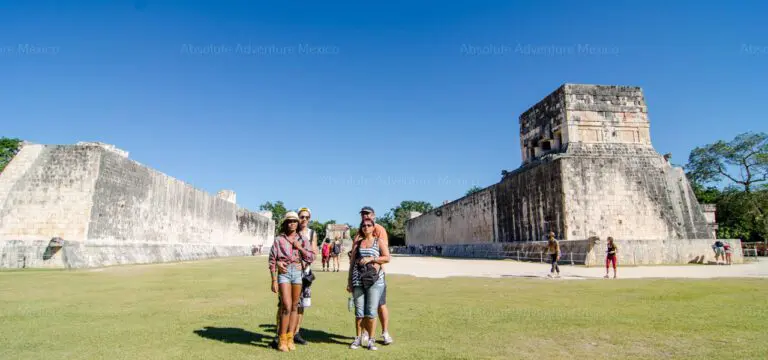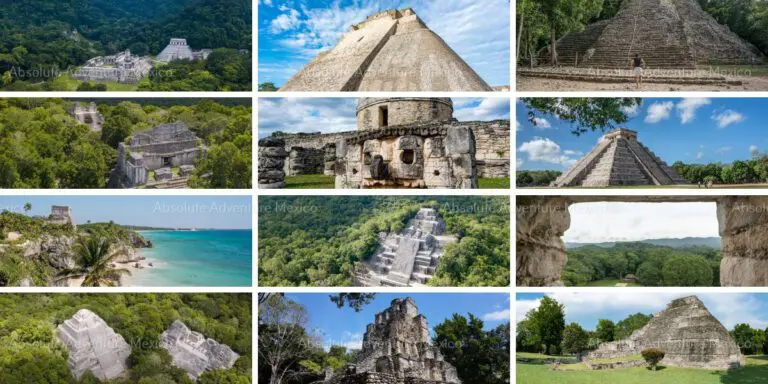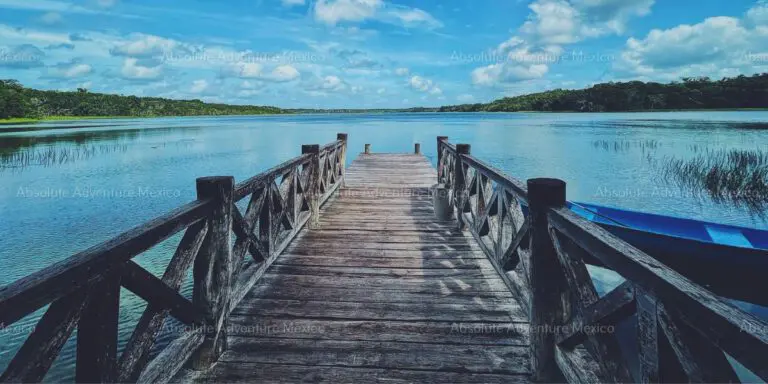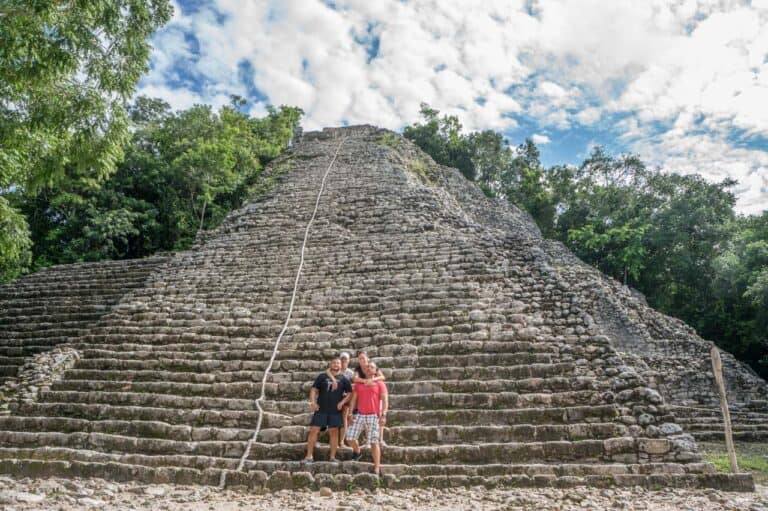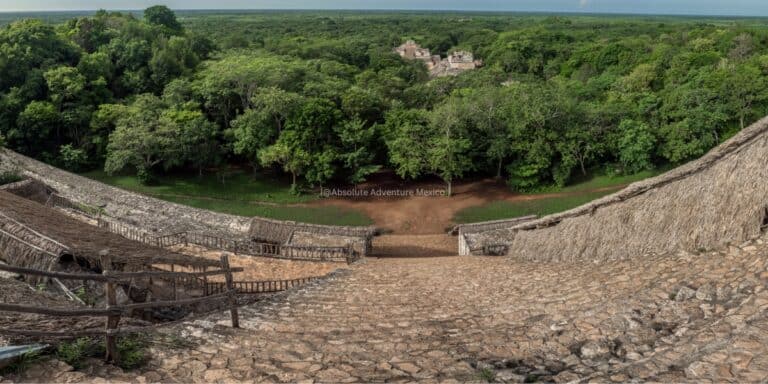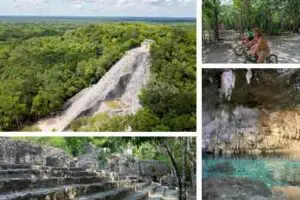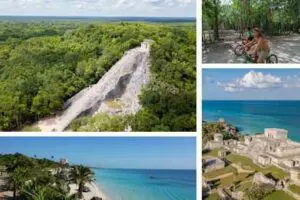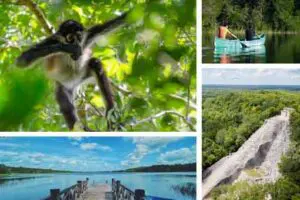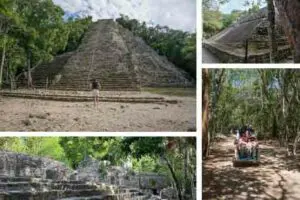One of the Best Mayan Site for History and Adventure
Hidden deep within the lush jungle of the Yucatán Peninsula, the Coba Ruins are among the most fascinating archaeological sites in Mexico.
Less crowded than Chichen Itza or Tulum, Coba offers visitors a unique opportunity to explore a once-thriving Mayan city surrounded by dense tropical forest, mysterious pathways, and towering pyramids.
Its extensive network of ancient roads and monumental architecture provide a window into one of the most powerful and sophisticated civilizations of Mesoamerica.
The Historical Significance of Coba Ruins
The name “Coba” is believed to mean “waters stirred by wind,” a reference to the site’s proximity to five lagoons that supported a large population. The city reached its peak between 600 and 900 AD, when it was estimated to be home to more than 50,000 people.
Unlike many other ancient cities, Coba was never fully conquered by the Spanish, and much of its history remained buried in jungle vegetation until recent archaeological efforts began uncovering its secrets. Today, it’s recognized for its strategic importance, vast scale, and contributions to understanding Maya political organization and urban planning.
Main Structures and Features of the Coba Ruins
Coba is a large site, covering over 31 square mile (80 square kilometers), and is connected by an extensive network of white limestone roads called sacbéob (plural of sacbé). More than 50 of these ancient roads radiate from the city, some stretching over 100 kilometers, linking Coba to other major Mayan sites such as Chichen Itza and Ek Balam.
1. Nohoch Mul Pyramid
The most iconic structure in Coba, Nohoch Mul stands at 42 meters (138 feet), making it the tallest pyramid in the Yucatán Peninsula. While climbing is currently restricted to preserve the structure, its grandeur still commands awe from visitors who reach its base.
2. Coba Group (Grupo Coba)
This central area includes some of the site’s oldest structures. It features temples, ball courts, residential buildings, and ceremonial platforms. The complex is easily accessible and ideal for beginning your visit.
3. Macanxoc Group
Located further along one of the sacbé paths, this area is noted for its collection of stelae—large stone slabs carved with intricate hieroglyphs and images. These offer insights into Mayan rulership, religious ceremonies, and alliances with other cities.
4. La Iglesia
This pyramid-shaped structure, known as “The Church,” is one of the first buildings you’ll encounter at the entrance. It’s beautifully preserved and reflects Coba’s ceremonial importance.
5. The Ball Courts
Coba features multiple Mayan ball courts, where the ritual ballgame “pok-ta-pok” was played. These courts provide a glimpse into the spiritual and competitive aspects of Mayan life.
The Ancient Roads of Coba: The Sacbéob
One of the most remarkable features of Coba is its network of ancient elevated roads, or sacbéob. Constructed from white limestone, they served as highways for trade, communication, and military movement. The longest known sacbé from Coba leads to the site of Yaxuna, over 100 km away, making it one of the longest known ancient roads in Mesoamerica.
These roads reflect the city’s influence across the region and its role as a dominant hub of politics and commerce during the Classic period.
The Mayan Civilization at Coba
Coba’s layout reflects a decentralized city, with several residential and ceremonial clusters connected by sacbéob. Its political and economic power peaked between 600 and 800 AD, when it rivaled cities like Tikal and Calakmul. Archaeologists believe Coba played a key role in the alliances and conflicts that shaped the region.
The many stelae found throughout the site also indicate the importance of Mayan queens at Coba—especially notable is Lady K’awiil Ajaw, a ruler who led the city during the 7th century. Her story challenges the traditionally male-dominated narratives of Maya leadership.
How to Explore the Coba Ruins
The Coba Ruins are located in the state of Quintana Roo, Mexico, and can be reached from several major tourist hubs:
- About 27 miles (44 km) northwest of Tulum
- Approximately 67 miles (109 km) northeast of Playa del Carmen
- Around 100 miles (160 km) south of Cancún
The ruins are spread out, so comfortable shoes and water are essential. You can explore Coba by:
Walking: Enjoy the tranquil jungle paths at your own pace.
Bicycle Rental: Rent a bike to explore the sacbéob quickly and enjoyably.
Bicitaxi (pedicab): A guided option for those who prefer to sit back while a local driver pedals.
Don’t forget your camera—wildlife sightings and jungle backdrops are part of the experience.
Private Tours to Visit Coba Ruins
For a seamless and enriching visit to the Coba ruins, we recommend booking a private guided tour. With Absolute Adventure Mexico, you can enjoy a personalized experience with transportation, an expert guide, and optional stops at nearby attractions like cenotes or the Tulum ruins.
Recommended Private Tour Options:
Coba Ruins + Cenote Swim: Combine history with a refreshing swim in a stunning underground cenote.
Coba + Tulum Ruins Tour: Visit two of the Riviera Maya’s most iconic archaeological sites in one day.
Coba + Punta Laguna Monkey Reserve: Add a jungle wildlife experience to your cultural exploration.
Each tour includes:
- Comfortable, private transportation from your hotel
- Certified bilingual guide
- Entrance fees
- Fresh lunch and water
- Flexible schedule and crowd avoidance
Private tours allow you to dive deeper into Mayan history without the stress of large groups or rushed itineraries.
